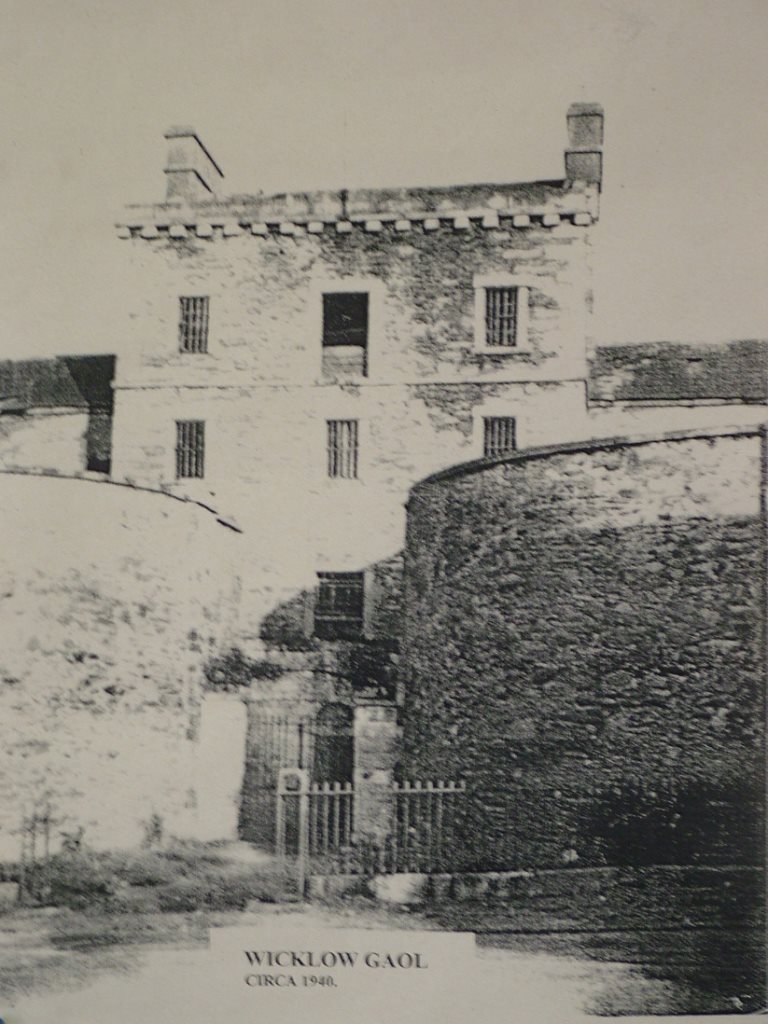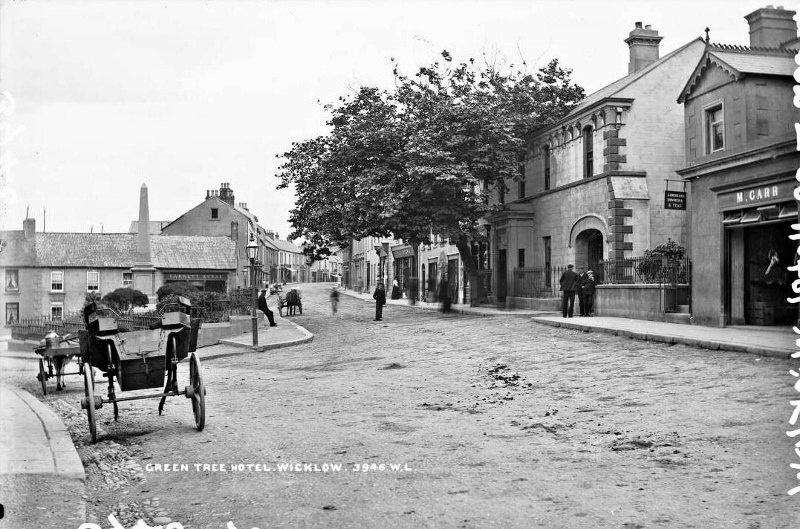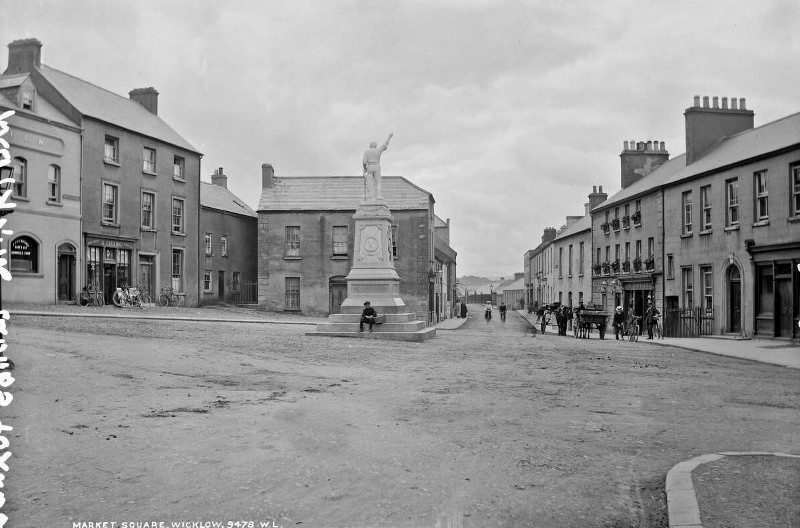Wicklow Town History
Fitzwilliam Square, Wicklow Town, turn of the century.
Wicklow Gaol, circa 1940.
Wicklow, our beautiful county town, has a history going back well over 3,000 years. From the earliest settlers to the present day, the town which we now know as Wicklow, due to its Viking origins, has an exciting story to tell.
Established at the estuary of the Vartry, the settlement grew over the years into the town we have today with its charming narrow streets and welcoming friendly people. Local folklore tells us of the arrival of St. Patrick here as a bishop in 432A.D. and of the unfriendly welcome which awaited both himself and his monks on their landing at Travilahawk Beach. It tells of how the local chieftain ordered his followers to drive the invaders away and in the ensuing stone-throwing incident one of Patrick’s monks lost his front teeth. This monk, who became known as Manntan meaning “Gubby,” later established a church here i.e. “Cill Mhantáin” (Gubby’s Church) which eventually became the Irish name for both the town and the county.
With Ireland gaining a reputation as the Island of Saints and Scholars, the christian settlement of Cill Mhantáin was ripe for picking by the marauding Vikings from Scandinavia. In the early 9th century these Vikings realised that the estuary of the Vartry was an ideal site from which to raid the inland monasteries and eventually the town of Vikinglo (Wicklow) began to grow.
With the invasion of the Normans in 1169 further conquest took place. The area around Wickloe, originally granted to Strongbow, eventually fell into the hands of the Fitzgerald family who proceeded to fortify the rock just south of the river estuary. The King’s Castle of Wickloe (The Black Castle) was constructed in the latter part of the 12th century. Under persistent attacks from the local clans, namely the O’Byrne’s and the O’Toole’s, it occasionally fell into native hands only to be re-captured by the forces of the Crown. It was finally destroyed in December 1645 when, during an attack by the O’Byrne’s, the castle caught fire and burned to the ground. The castle ruins, which are visible today, along with the ruins of the Franciscan Friary, are the only solid evidence of Norman influence in this area.
With the passing of time Wicklow continued to grow as port activity increased. The building of the Stone Bridge in the 1690s gave access to the Murrough. Following the introduction of the Penal Laws, the building of Wicklow Gaol commenced in 1702 and was not finally completed until the 1840s. Many offenders of the Penal Laws were held there as were numerous rebels in the aftermath of the 1798 Rebellion. Today the restored gaol, a must-see for locals and tourists alike, tells the story of what life was like for the early prisoners, how the rebels including Billy Byrne were treated there, and the transportation of many to the penal colonies of Botany Bay and Van Diemen’s Land.
The 19th century was one of huge change and development here in Wicklow. Our world-famous mariner, Capt. Robert Halpin, who was born in the Bridge Tavern in 1836, spent his life at sea from the age of 11. A ship’s captain by the age of 21, he is remembered for his association with Brunel’s magnificent ship, the ‘Great Eastern’ from which the trans-Atlantic telegraph cable was laid in 1866. His later association with the ship as its captain gained him world renown until his retirement from the sea and the building of his new home, Tinakilly House, Rathnew (1876-1880).
While Halpin was at sea the extension of the railway to Wicklow in 1855 was of immense importance. It lead to major development of both the town and the port and was a vital link socially and industrially. Most of Wicklow’s important buildings were constructed during the 19th century including the Courthouse (1824), the County Infirmary (1834), The Marine on the Murrough (1839), St. Patrick’s Catholic Church (1844), the Halpin Memorial, Fitzwilliam Square (1897) and the 1798 ‘Billy Byrne’ Memorial, Market Square (1899/1900).
Today Wicklow has expanded in size and population but it retains its old-worldly atmosphere and although its narrow streets may lead to traffic congestion at times it allows the visitor the opportunity to enjoy the streetscape, quays and harbour of our picturesque and historical town.
John Finlay.
Photos from the Lawrence Collection, National Library of Ireland.







